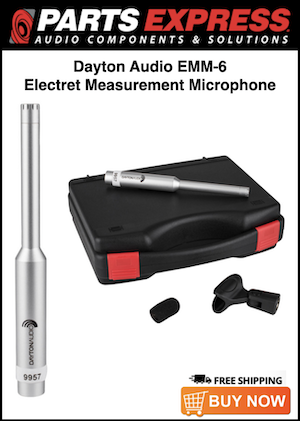If you're sure the absorption graphcs are faked you can sue them for false marketing...I would stay away from the site Acoustic Fileds and Dennis Foley. The site contains several incorrect statements and also some outright lies.
A much better one with sound advices (pun intended!) and no rubbish is: http://arqen.com/acoustics-101/room-setup-speaker-placement/ At first glance It may look like it is only for studios and control rooms but most of the info is directly applicable also for home theaters. -Like the advice of a starting point about 38% distance from the front wall where you have the screen. Just turn it around and use starting point for sweet spot as 38% of room lenght away from the wall behind you. (The advice comes down to the fact that in a non treated room theoretically the first 3-4 lowest length modes should be best balanced at that position. In a sealed concrete room that is. For a non concrete room with flexing drywalls, doors and windows, the best place might be somewhere along 30-40% of room length. -For length modes It doesn't matter if you are at a certain length away from the front or the backwall.)
Read through the "Tutorials a DIY resources", there is quite a bit of good advices.
-
AUDIO VIDEO PROCESSING, SETUP & ENVIRONMENTOfficial REW (Room EQ Wizard) Support Forum Audiolense User Forum Calibration Equipment Auto-EQ Platforms / Immersive Audio Codecs Video Display Technologies / Calibration AV System Setup and Support Listening Room / Home Theater Build Projects Room Acoustics and Treatments AV Showcase Movies / Music / TV / Streaming
-
AUDIO VIDEO DISCUSSION / EQUIPMENTHome Theater / Audio and Video - Misc Topics Essence For Hi Res Audio AV Equipment Advice and Pricing Awesome Deals and Budget AV Equipment AV Receivers / Processors / Amps UHD / Blu-ray / CD Players / Streaming Devices Two Channel Hi-Fi Equipment DIY Audio Projects Computer Systems - HTPC / Gaming HD and UHD Flat Screen Displays Projectors and Projection Screens AV Accessories Buy - Sell - Trade
Navigation
Install the app
How to install the app on iOS
Follow along with the video below to see how to install our site as a web app on your home screen.
Note: This feature may not be available in some browsers.
More options
You are using an out of date browser. It may not display this or other websites correctly.
You should upgrade or use an alternative browser.
You should upgrade or use an alternative browser.
Size of the Room?
- Thread starter hiawatha
- Start date
I wrote I have little confidence in what is said on the Acoustic Fields’ site and their videos. Lots of mumbo jumbo and some hard to accept claims ( =lies in my view), -like they invented activated carbon absorbers. That is old stuff and has been studied by acousticians and technical institutes. There are also some patents around with absorbers containing activated carbon. None from Acoustic Fields though as far as I’m aware. Another claim in a video: Glasswool / stonewool fibers are lighter than air. Wow! Hydrogen and helium gas is lighter than air. What happens when a kid ”drops” a helium balloon? The kid cries of course and the balloon goes up and drifts away way up high into the stratosphere. Where do fibers / dust from common absorber materials end up? -On the floor. Lighter than air (?), wouldn’t think so … Would I believe other claims from a person saying so? Especially from one interested in selling me services and products. Eh, I think you know my answer to that. Their videos may seem well produced, sure, but the value of the content, is it worth more than a 3 dollar bill?
A thread on another forum with some interesting discussions and comments about Acoustic Fields and their clams: https://www.gearslutz.com/board/studio-building-acoustics/1293859-green-glue-math.html starts from post #10. There are some very knowledgeable people participating,like Avare, Tom Stevens, Bert Stoltenberg and Soundman 2020.
(I don’t think third party reports from certified laboratories, let’s say Riverbanks’ or whoever, which are published on the Acoustic Fields’ site are any fakes. It is another thing to ask yourself to what extent those reports have transferable data to your home theater / listening room. Typically, following a standard, the measurement is made in an empty echo chamber with concrete or marble walls, floor and ceiling with reflectors hanging around to get as diffusive sound field as possible. Measurement is done with the empty room, then a bit more than 10 m² / 110 ft² of the material is placed on the floor (as a square) and the measurment made again. Measurement figures over the frequency range are then compared and absorbtion data calculated. You usually get absorbtion figures above 1,0 for some frequncies which of course is impossible but a result of the measuring procedure. -Sound waves are not only entering the absorber from straight on but also from the sides (the cross section). Your room, is in no way a diffusive field, cannot be, or as diffusive as the echo chamber. Also, low frequency sounds waves in your room are not specular, it is more like they enter into the absorber straight on. Another way for more ”honest figures” for the low frequencies would be to place the material in an impedance tube. A speaker fixed at one end, a lid at the other with the material and microphone in between. Sound waves will then be straight on. The absorbtion figures will not be as impressive as from the echo chamber.)
A thread on another forum with some interesting discussions and comments about Acoustic Fields and their clams: https://www.gearslutz.com/board/studio-building-acoustics/1293859-green-glue-math.html starts from post #10. There are some very knowledgeable people participating,like Avare, Tom Stevens, Bert Stoltenberg and Soundman 2020.
(I don’t think third party reports from certified laboratories, let’s say Riverbanks’ or whoever, which are published on the Acoustic Fields’ site are any fakes. It is another thing to ask yourself to what extent those reports have transferable data to your home theater / listening room. Typically, following a standard, the measurement is made in an empty echo chamber with concrete or marble walls, floor and ceiling with reflectors hanging around to get as diffusive sound field as possible. Measurement is done with the empty room, then a bit more than 10 m² / 110 ft² of the material is placed on the floor (as a square) and the measurment made again. Measurement figures over the frequency range are then compared and absorbtion data calculated. You usually get absorbtion figures above 1,0 for some frequncies which of course is impossible but a result of the measuring procedure. -Sound waves are not only entering the absorber from straight on but also from the sides (the cross section). Your room, is in no way a diffusive field, cannot be, or as diffusive as the echo chamber. Also, low frequency sounds waves in your room are not specular, it is more like they enter into the absorber straight on. Another way for more ”honest figures” for the low frequencies would be to place the material in an impedance tube. A speaker fixed at one end, a lid at the other with the material and microphone in between. Sound waves will then be straight on. The absorbtion figures will not be as impressive as from the echo chamber.)
Last edited:
As I told I have critisized Dennis Foley many times and called upon his false statements. There is definitely a lot of pseudoscience and false statements on the AF site. But the good thing is that they give the correct basic information about absorption and diffusion and you can get free information on how to build your DIY absorbers from there.I wrote I have little confidence in what is said on the Acoustic Fields’ site and their videos. Lots of mumbo jumbo and some hard to accept claims ( =lies in my view), -like they invented activated carbon absorbers. That is old stuff and has been studied by acousticians and technical institutes. There are also some patents around with absorbers containing activated carbon. None from Acoustic Fields though as far as I’m aware. Another claim in a video: Glasswool / stonewool fibers are lighter than air. Wow! Hydrogen and helium gas is lighter than air. What happens when a kid ”drops” a helium balloon? The kid cries of course and the balloon goes up and drifts away way up high into the stratosphere. Where do fibers / dust from common absorber materials end up? -On the floor. Lighter than air (?), wouldn’t think so … Would I believe other claims from a person saying so? Especially from one interested in selling me services and products. Eh, I think you know my answer to that. Their videos may seem well produced, sure, but the value of the content, is it worth more than a 3 dollar bill?
A thread on another forum with some interesting discussions and comments about Acoustic Fields and their clams: https://www.gearslutz.com/board/studio-building-acoustics/1293859-green-glue-math.html starts from post #10. There are some very knowledgeable people participating,like Avare, Tom Stevens, Bert Stoltenberg and Soundman 2020.
(I don’t think third party reports from certified laboratories, let’s say Riverbanks’ or whoever, which are published on the Acoustic Fields’ site are any fakes. It is another thing to ask yourself to what extent those reports have transferable data to your home theater / listening room. Typically, following a standard, the measurement is made in an empty echo chamber with concrete or marble walls, floor and ceiling with reflectors hanging around to get as diffusive sound field as possible. Measurement is done with the empty room, then a bit more than 10 m² / 110 ft² of the material is placed on the floor (as a square) and the measurment made again. Measurement figures over the frequency range are then compared and absorbtion data calculated. You usually get absorbtion figures above 1,0 for some frequncies which of course is impossible but a result of the measuring procedure. -Sound waves are not only entering the absorber from straight on but also from the sides (the cross section). Your room, is in no way a diffusive field, cannot be, or as diffusive as the echo chamber. Also, low frequency sounds waves in your room are not specular, it is more like they enter into the absorber straight on. Another way for more ”honest figures” for the low frequencies would be to place the material in an impedance tube. A speaker fixed at one end, a lid at the other with the material and microphone in between. Sound waves will then be straight on. The absorbtion figures will not be as impressive as from the echo chamber.)
The site you linked was also good, although it was much harder to find information from there that would be transferrable to a home listening room. The fractal residue diffusor article was interesting but somehow I think they will be less effective than a proper foot deep quadratic residue diffuser.
Popular tags
20th century fox
4k blu-ray
4k uhd
4k ultrahd
action
adventure
animated
animation
bass
blu-ray
calibration
comedy
comics
denon
dirac
dirac live
disney
dolby atmos
drama
fantasy
hdmi 2.1
home theater
horror
kaleidescape
klipsch
lionsgate
marantz
movies
onkyo
paramount
pioneer
rew
romance
sci-fi
scream factory
shout factory
sony
stormaudio
subwoofer
svs
terror
thriller
uhd
ultrahd
ultrahd 4k
universal
value electronics
warner
warner brothers
well go usa










